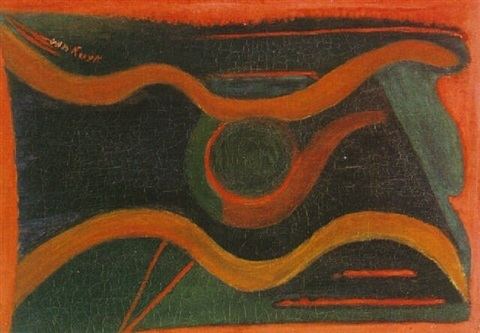Name Laurens Kuik | Died 1963 | |
 | ||
Laurens van Kuik (1889, 's Gravenmoer, Netherlands – 1963, Den Haag) was a teacher before he, in 1911, fascinated by the arts, started working as an autodidact painter. In 1913, he became so enthralled and driven as artist that he became a teacher at the school in North Brabant, and went to live in Rotterdam. In 1917, he became one of the founders of the Rotterdam-based artistic movement known as "De Branding". Other members included Herman Bieling, Ger ladage (aka Gerwhl), Bernard Toon Gits, Jan Sirks and Wim Schmacher. Van Kuik's early works are to some extent influenced by cubism, tribal art, but also theosophy and anthroposophy.
He made a series of works, similar to futurism, inspired by the sounds and movements in the city of Rotterdam. In the years 1916–1918 he worked together with Bernard Toon Gits; Together they created "synthetic" or "synthetic-psychologic" portraits, from themselves and from each other. Van Kuik named his work at that period "transcendent realism". In 1918, he changed to producing a more figurative art. He made single pictures and started painting his well-known intense portraits and masks. These works are very similar to tribal art. Art critic Kasper Niehaus wrote: "If the negros would not only sculpt but also paint, They would probably do it in Laurens van Kuik's style." In 1927 he moves to Paris and later in Den Haag and Amsterdam. Except for "De Branding" did van Kuik associate with "De Volstrekt Modernenen", "De Onafhankelijken", "De Anderen" and "De Sphinx".
